धीमे पके स्पैनिश कोसीदो का जादू
38 मिनट पढ़ें स्पेन के लोकप्रिय कोसीदो की खोज करें: धीमे-पके चने और मांस के स्ट्यू के बारे में जानें—इसके क्षेत्रीय मूल, पारंपरिक परोसने की परंपरा, आवश्यक सामग्री, और ऐसी तकनीकें जो शोरबा को गहरा स्वाद दें और पकवान के टुकड़े पिघलते-नरम बनाएं। अक्टूबर 11, 2025 18:07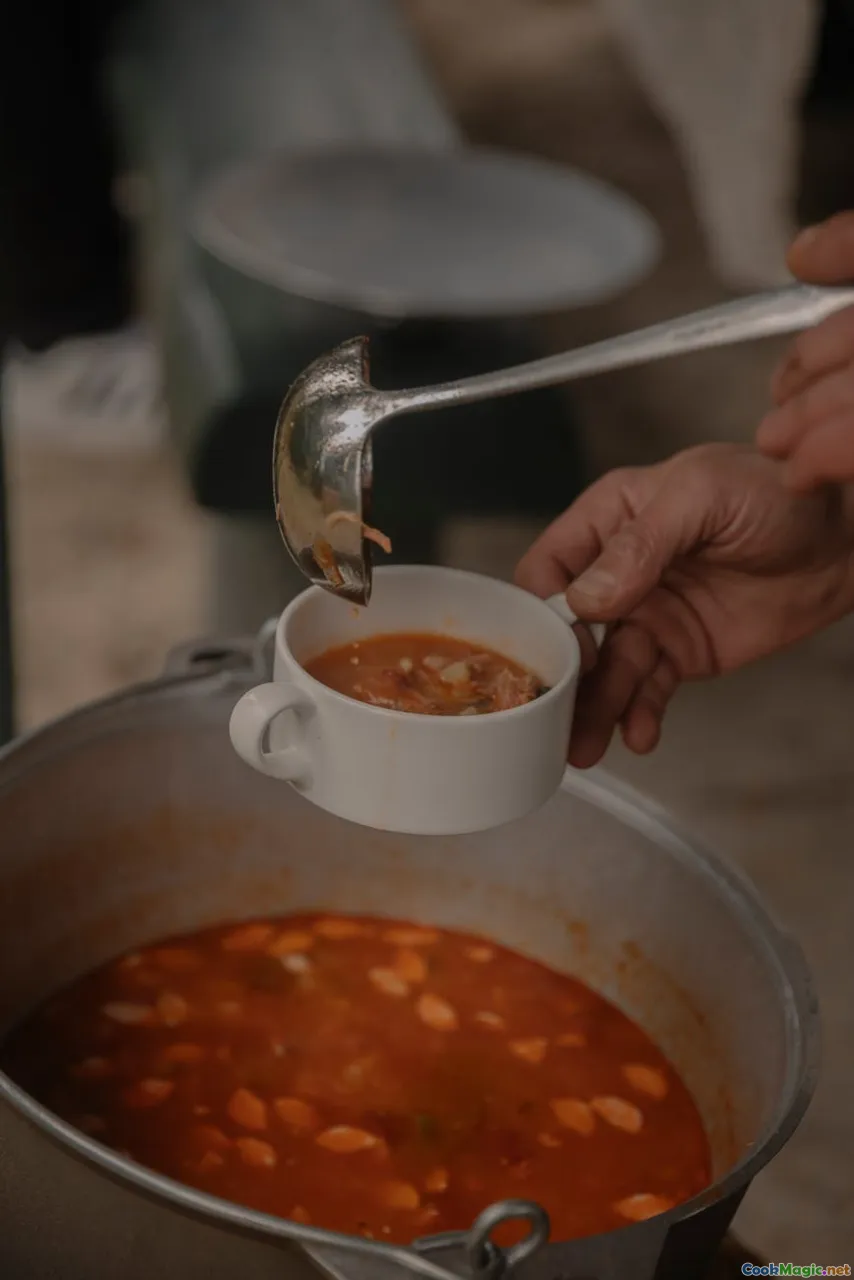
The first spoonful of cocido is always a reminder that time has flavor. A glistening broth kissed with 'ojos' of amber fat, the sweet nuttiness of chickpeas breaking softly under your tongue, the perfumed breath of leeks and marrow bones rising like steam from a winter street—it is Spain in slow motion. I remember a January in Madrid when the whole city seemed to hum at a lower frequency, the streets shining with a recent rain, and a restaurant window fogged by a line of terracotta ollas bubbling quietly over coals. A server placed a carafe of shimmering caldo in front of me and said, 'Primero, el vuelco de la sopa.' First the soup, then the rest. A ritual of patience, order, and appetite.
The Clay Pot’s Whisper
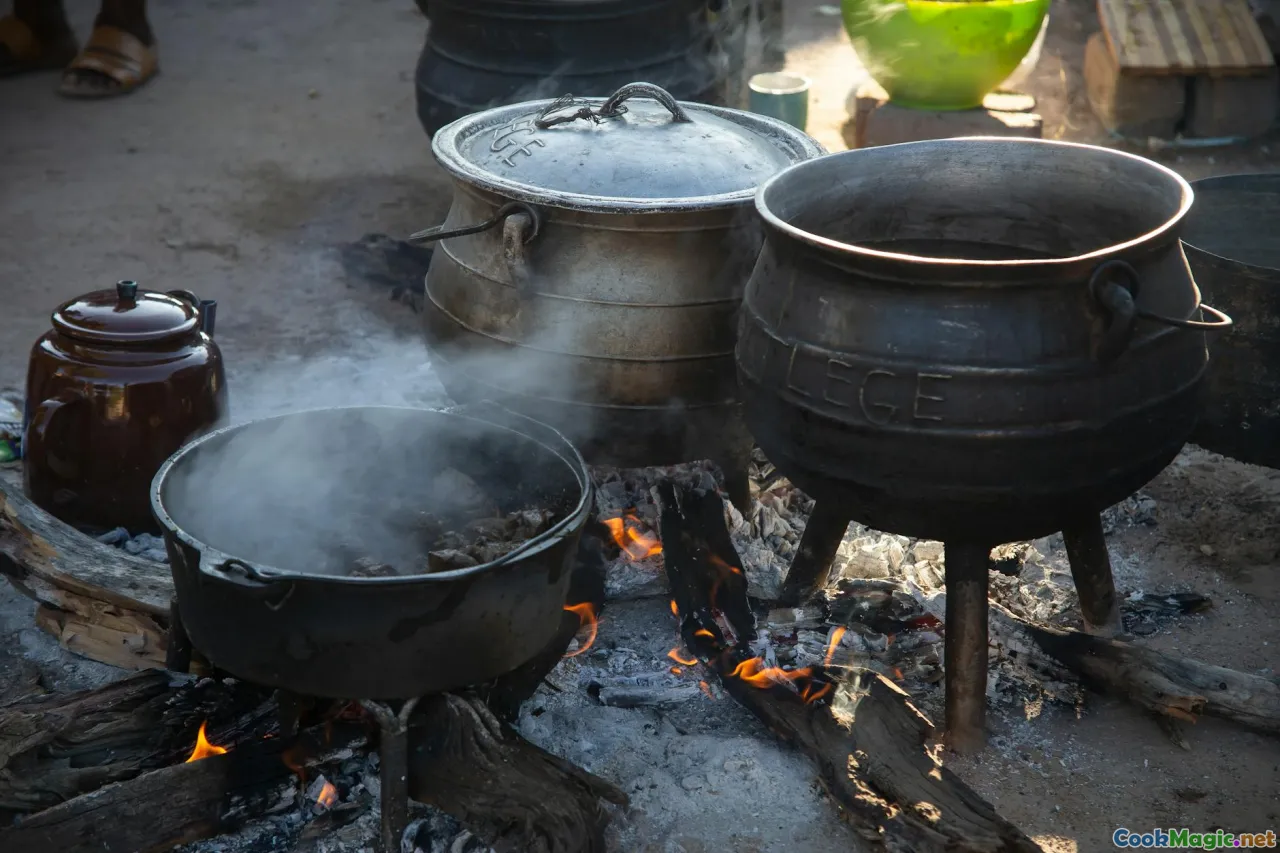
On a Sunday morning in Chamberí, you can hear cocido being made before you smell it. There’s a particular sound—chof-chof—that silken, almost private simmer of liquid negotiating with bone. In a clay pot, the sound is rounder, more human, as if the vessel were inhaling and exhaling. When your ear learns this whisper, you also learn the language of restraint: don’t boil; don’t rush; let the proteins unfurl and the chickpeas bloom.
Years ago, I sat by the kitchen door at La Bola, Madrid’s legendary cocido house, watching the red-glazed pots set over an oak charcoal fire. The cooks skimmed with quick wrists, coaxing a broth that was clear but golden, translucent yet generous. The smell was a crossword of memories: smoked paprika drifting from chorizo, the mineral thrum of ham bone, cabbage’s faint brassica sweetness tamed by garlic. Outside, tourists wove through umbrellas and puddles; inside, time stood still—the pot was a metronome, and lunch would arrive when the music was ready.
What We Mean by Cocido
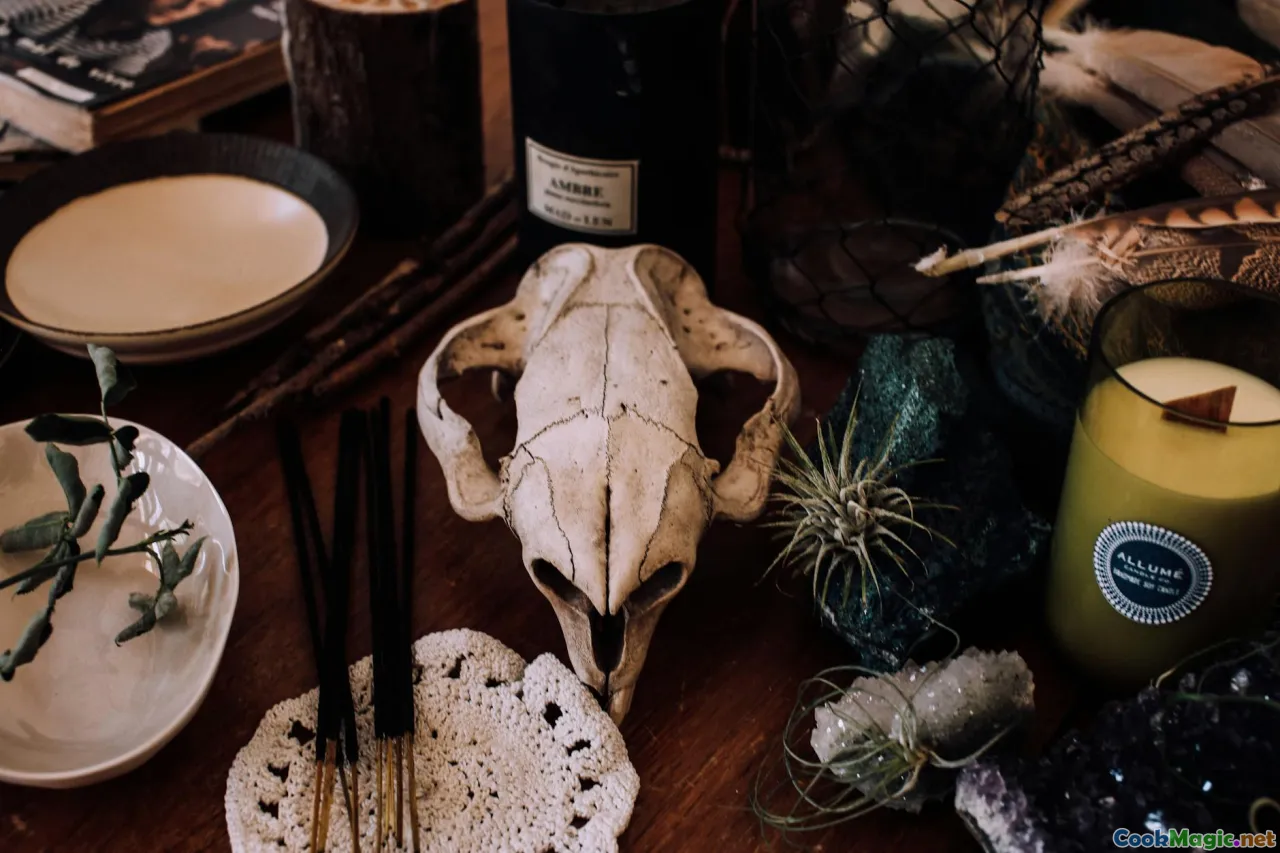
Cocido is a slow-cooked, layered stew whose heart is the chickpea. The name simply means “cooked,” but inside that neutrality lives a universe of regional dialects: madrileño in the capital; maragato in León; lebaniego and montañés in Cantabria; puchero in Andalusia; the Catalan escudella i carn d’olla. Each has its sacred geometry of legumes, meats, and service.
At its core, cocido is two (or three) meals in a single ritual. First comes the broth—often strained and fortified with fine noodles, fideos—clear enough to catch light, rich enough to cling to the lips. Then the pot gives up its solids: chickpeas that feel like buttered parchment, vegetables softened and sweet, assorted 'sacramentos' (the blessed meats): shank, bacon, ham bone, chorizo, sometimes morcilla (blood sausage), and, in some traditions, a hen or a piece of salt pork. In Madrid, we call the service los tres vuelcos—three 'tippings': soup, chickpeas and vegetables, then meats. In León’s cocido maragato, the order is reversed with a matter-of-fact defiance: meat first, then chickpeas, then soup, as if to say, why wait for the thunder?
Cocido is not a thick stew. It is a conversation between clarity and depth. It is also an edible archive. You can trace its lineage from the Sephardic adafina—an overnight Sabbath stew of chickpeas and meat—to the olla podrida of the Spanish Golden Age, celebrated by Cervantes and Quevedo, and eventually to the nineteenth-century Madrid of dining rooms and wood-fired kitchens. The dish survived empires and gas stoves because it delivers what our bodies—and our cultures—crave in winter: warmth, thrift, indulgence, and the levity that follows appetite satisfied.
A Family of Cocidos Across Spain
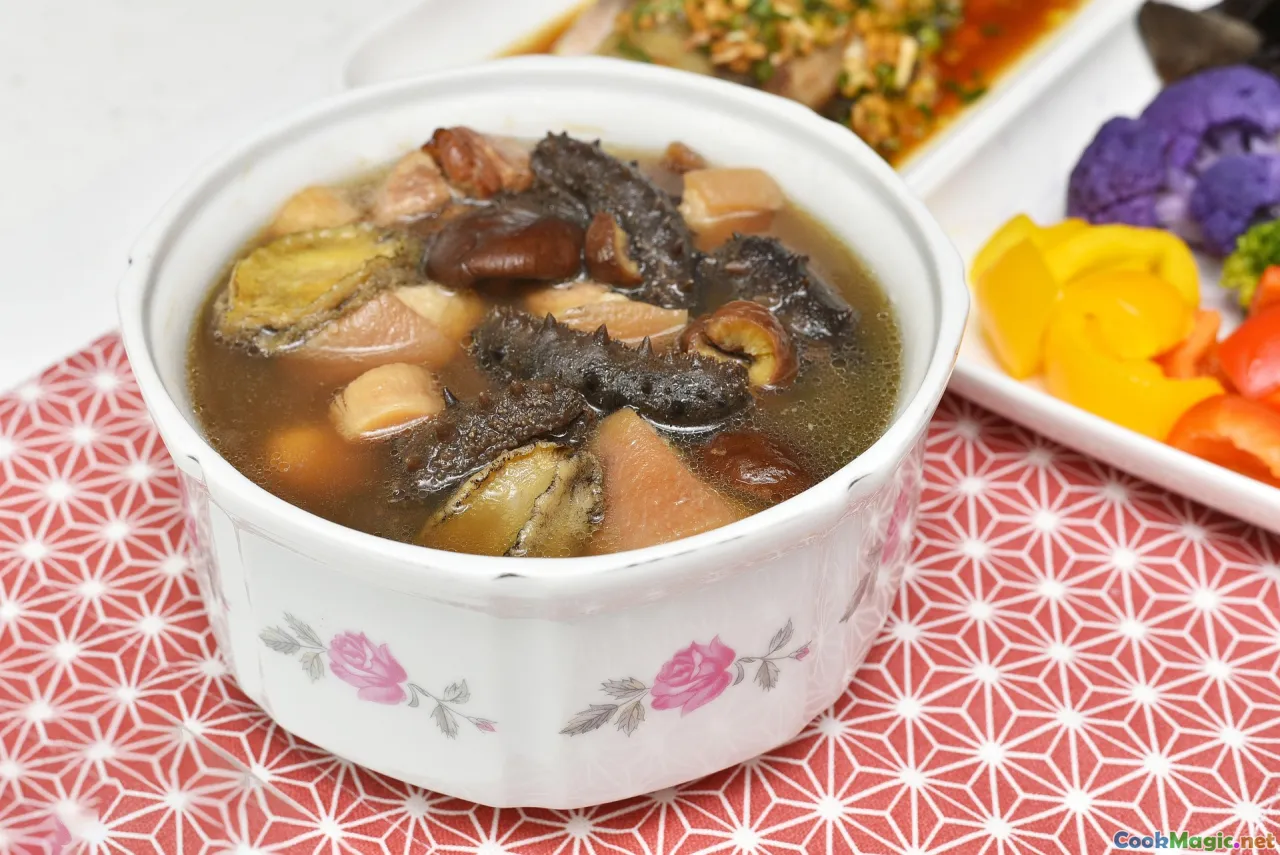
Spain is a patchwork, and cocido is the stitching thread.
-
Cocido madrileño (Madrid): Built on garbanzos, beef shank (morcillo), chicken or hen, chorizo, tocino (salted pork belly), ham bone, and vegetables like cabbage, carrot, leek, and turnip. Served en tres vuelcos, with a noodle soup leading the way. The broth is clear and silky rather than opaque; the cabbage is often sautéed with garlic and a hint of vinegar before serving.
-
Cocido maragato (Maragatería, León): The rebel. It reverses the order: meats first, then chickpeas and vegetables, and finally the soup, a closing lullaby. Heavier on pork (ear, snout, rinds), with cecina making appearances. In Castrillo de los Polvazares, restaurants serve it as a rite of passage, with clay bowls arriving like a procession.
-
Cocido lebaniego (Liébana, Cantabria): A mountain cousin that uses lebaniego chickpeas (often from around Potes) and leans into a 'relleno' or 'borono'—a fluffy, saffron-tinged bread and egg dumpling simmered in the broth. The texture is feather-light, like an alpine matzo ball with Spanish swagger.
-
Cocido montañés (Cantabria): White beans instead of chickpeas, and no noodle soup. It leans into berza (local cabbage), chorizo, morcilla, and tocino—cousin to Asturian fabadas but greener, leafier, and slightly more rustic.
-
Puchero andaluz (Andalusia): The broth becomes a star in sopa de picadillo, where the noodles meet diced Serrano ham, hard-boiled egg, and sometimes a leaf of hierbabuena. It’s a Christmas table icon in Seville—lighter, aromatic, and herb-bright.
-
Escudella i carn d’olla (Catalonia): A winter feast that includes galets (big pasta shells) and the beloved pilota, a large, truffled meatball. The broth is powerful but poised, with a Catalan sense of ceremony.
Each version speaks of terrain and larder. The chickpea itself shifts: the petite, creamy Pedrosillano from Salamanca; the buttery Fuentesaúco from Zamora; the earthy lebaniego varieties. Getting particular about your garbanzo is like choosing the right grain for risotto: devotion pays dividends in texture.
Anatomy of a Madrileño Cocido
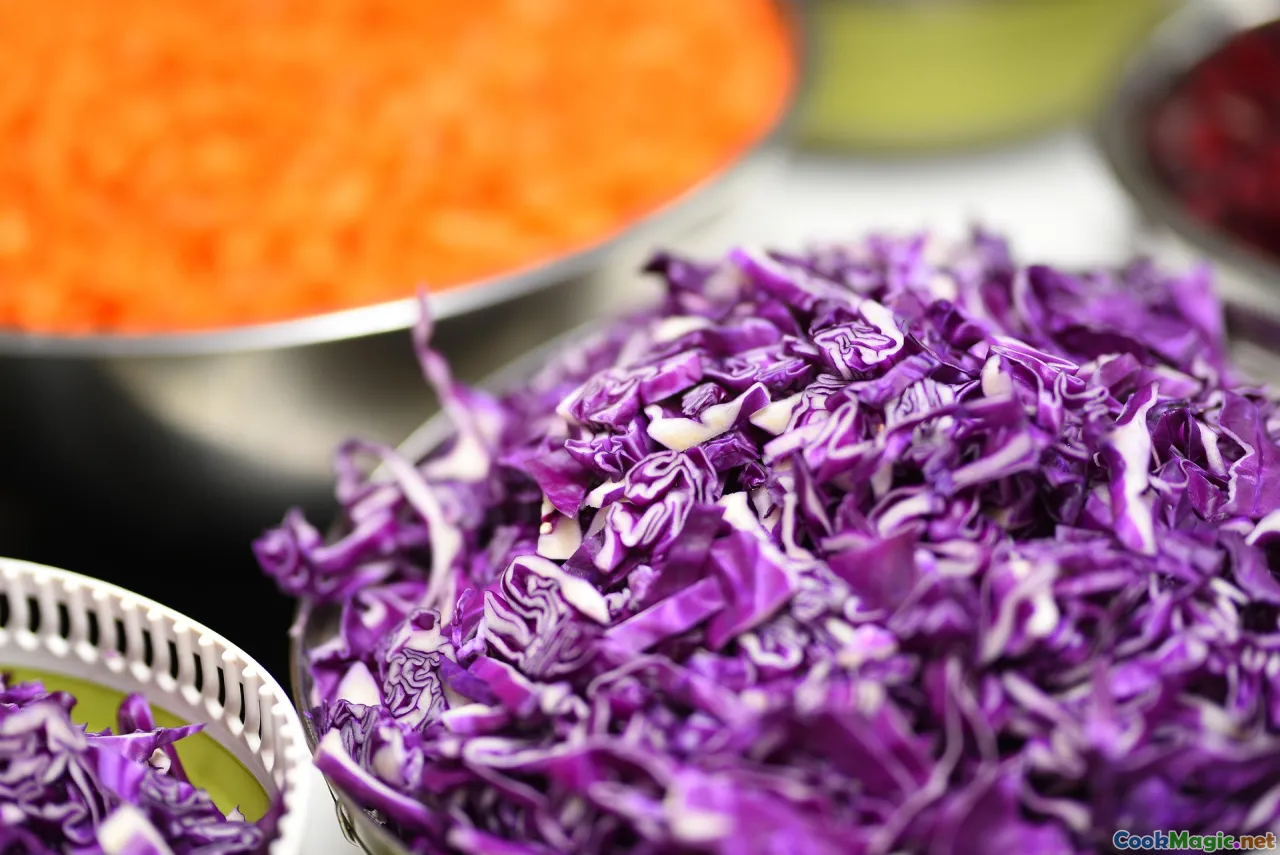
Think of cocido madrileño as a layered orchestra that begins with bones and ends with laughter.
-
Chickpeas: The soul. Pedrosillano hold their shape while turning creamy within; Fuentesaúco are larger and opulent. Always soak. Always.
-
Bones: Jamón bones (hueso de jamón), marrow bones, and a piece of salted pork backbone (espinazo) build a mineral frame. They season the broth from the shadows—salt carefully.
-
Meats: Morcillo (beef shank) is your anchor; it yields fibers that stay juicy. Chicken or better yet, hen (gallina) contributes depth and a faint gamey sweetness. Chorizo brings pimentón perfume and gentle heat; morcilla (if using) lends a velvet bass note—prick it or wrap it in cheesecloth so it doesn’t burst.
-
Vegetables: Cabbage (repollo), carrot, leek, and turnip (nabo), sometimes parsnip (chirivía) and potatoes. The cabbage often appears twice—first simmered, then sautéed with garlic and a breath of sherry vinegar to lift richness.
-
Aromatics: Bay leaves, black peppercorns, sometimes a clove-studded onion. Nothing flashy. No overwhelming herbs. The chorizo’s paprika is enough color.
-
Noodles: Fideos finos or cabellín—fine enough to play nicely with a clear broth.
-
Optional luxuries: A piece of tocino ibérico for perfume; a calf foot or knuckle for gloss; a saffron pinch slipped into the broth like a whispered secret.
The Slow Art: How to Cook Cocido at Home
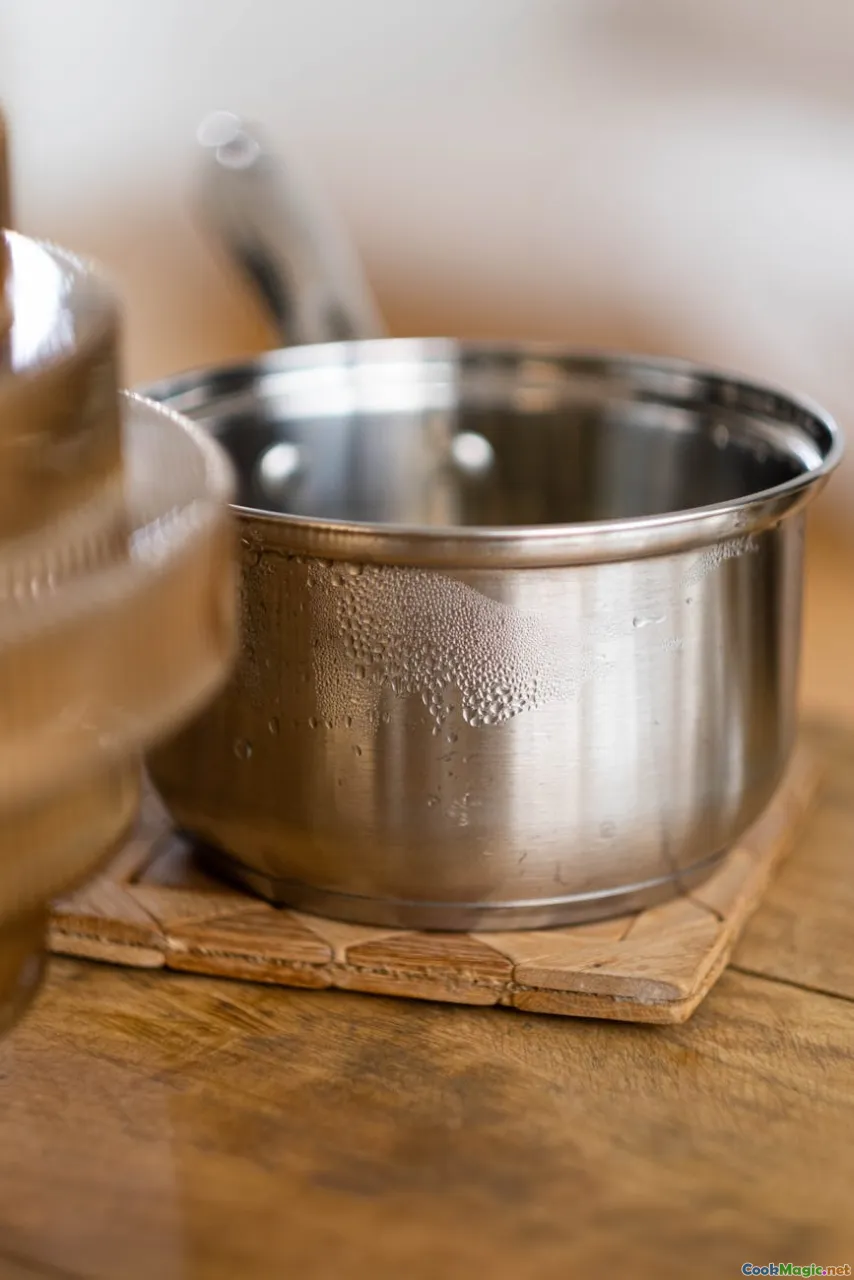
Serves 6 generously, with leftovers (you want leftovers).
Ingredients
- 450 g dried chickpeas (Pedrosillano or Fuentesaúco), soaked 10–12 hours in lightly salted water (1 tbsp kosher salt per liter)
- 600 g beef shank (morcillo), in large pieces
- 1/2 hen or chicken (about 800 g), bone-in
- 2 marrow bones (huesos de caña), well soaked to remove blood
- 1 jamón bone (hueso de jamón), rinsed
- 1 piece salted pork backbone (espinazo) or a small piece of salted pork rib, soaked 1–2 hours
- 150 g tocino (salted pork belly), optional but recommended
- 2 semi-cured chorizos (about 200 g total), pricked
- 1 morcilla de cebolla (about 150 g), optional, pricked or wrapped
- 1 large leek, cleaned and halved
- 2 carrots, peeled
- 1 small turnip and/or 1 parsnip, peeled
- 1/2 medium cabbage (repollo), cored and cut into large wedges
- 1 medium onion, halved
- 2 cloves stuck into the onion, optional
- 2 bay leaves
- 8–10 black peppercorns
- Sea salt to taste
- 150 g fideos finos (no. 0–1)
- 3 garlic cloves, thinly sliced (for sautéing cabbage)
- Olive oil, sherry vinegar, and chopped parsley for finishing
Equipment: A large, heavy stockpot or an olla de barro/clay pot, a slotted spoon, fine mesh skimmer, and patience.
Timeline and Method
-
The soak and the brine: The night before, soak the chickpeas in cold water with 1 tablespoon kosher salt per liter. Salting helps the skins stay supple. Soak the jamón bone and salted pork in fresh water to moderate saltiness if needed. Soak marrow bones for at least 1 hour in cold water to draw out blood—change water once.
-
Build the foundation: In your pot, lay in beef shank, hen/chicken, jamón bone, marrow bones, espinazo, and tocino. Cover with cold water by 5–7 cm. Bring just to a shy simmer over medium heat. When the first bubbles break, lower heat immediately. Skim diligently—this first ten minutes determines clarity. Add the onion (clove-studded if you like), leeks, carrots, turnip/parsnip, bay leaves, and peppercorns.
-
Asustar the chickpeas: Drain the chickpeas and wrap them in a mesh bag or add directly to the pot. When the liquid returns to a gentle simmer, add the chickpeas. After 10 minutes, 'asústalos'—startle them—with half a glass of cold water. This practice, adored by grandmothers and chefs alike, helps tenderize and prevents skins from splitting. Repeat once more after 10 minutes if the simmer grows too eager.
-
The long hush: Maintain the gentlest possible simmer—tiny blips, not a rolling boil—for 2.5 to 3.5 hours, depending on chickpea variety. Skim occasionally. Salt sparingly at first; remember your bones and tocino carry salt. After 90 minutes, taste the broth: it should be savory and round with a lingering sweetness from the veg.
-
The embutidos arrive: About 45 minutes before the chickpeas are done, add the chorizos. If using morcilla, add it in the last 20 minutes, pricked or swaddled. You want it heated through, not dissolved.
-
Separate and set: When chickpeas yield to gentle pressure and taste creamy within, turn off the heat. Let the pot rest 20 minutes. Fish out the meats and vegetables. Strain the broth through a fine mesh if you desire a polished texture. Taste and adjust salt.
-
The cabbage glow-up: Simmer the cabbage wedges separately in salted water until tender. Drain, then sauté in olive oil with sliced garlic until it smells nutty and sweet. Finish with a slip of sherry vinegar and chopped parsley. This is the counterpoint that keeps your palate curious.
-
The soup (primer vuelco): Bring a portion of the strained broth to a boil, add fideos, and cook until just tender (2–3 minutes). Serve in warmed bowls. The broth should shimmer, with tiny golden 'eyes'.
-
The chickpeas and veg (segundo vuelco): Arrange chickpeas, carrots, leeks, turnip, and the garlicky cabbage on a platter. Drizzle with some hot broth and olive oil. Offer a small bowl of salsa de tomate (a simple, bright tomato sauce) and some pickled piparras (Basque peppers) on the side.
-
The meats (tercer vuelco): Slice the morcillo. Present chicken, chorizo, morcilla if used, tocino, and any marrow scooped from the bones. A pinch of flaky salt and a squeeze of lemon can be transformative. Warm, coarse country bread is nonnegotiable.
Technique Clinic: Chickpea Science and Simmer Management
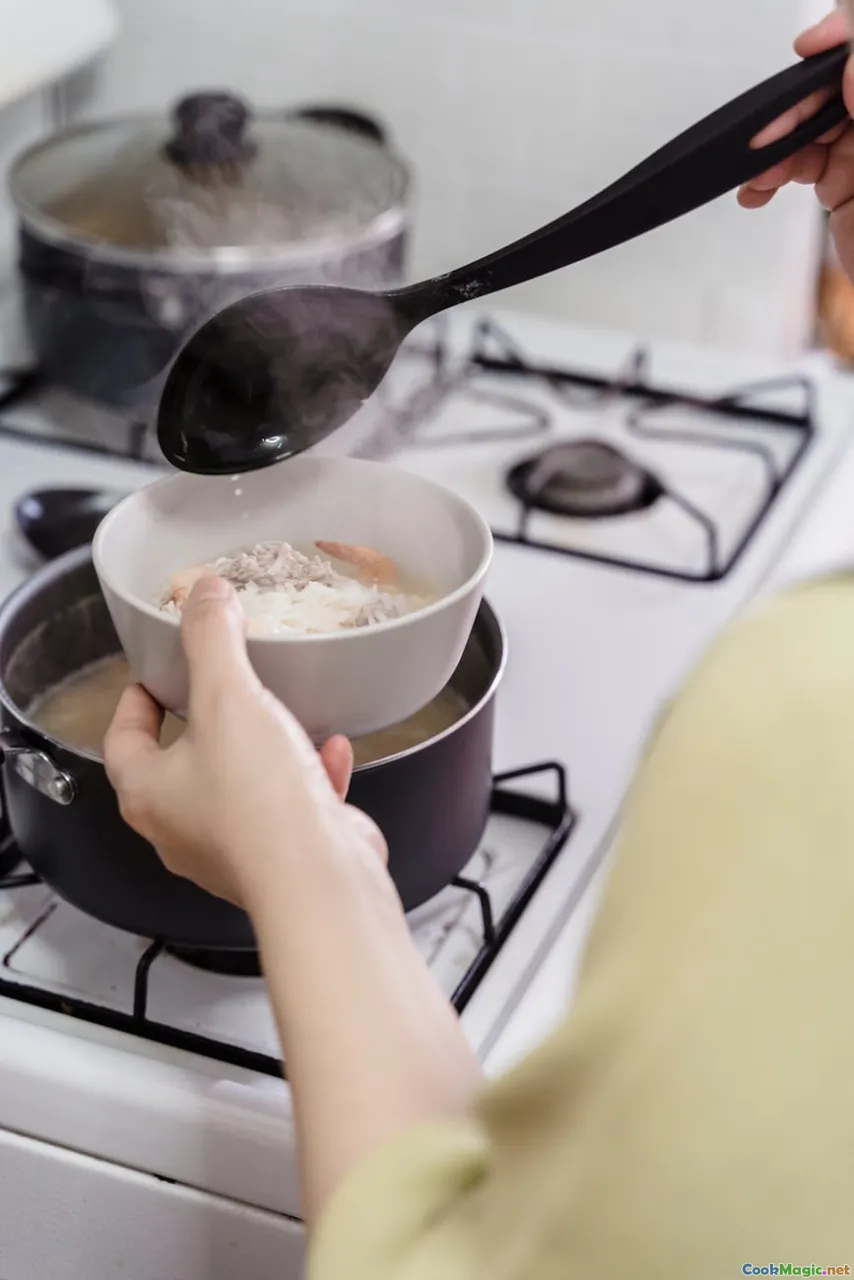
-
The brine soak: Chickpeas soaked in salted water hydrate more evenly and cook with skins intact. The salt begins seasoning from within; don’t worry about toughness—this is myth.
-
Asustar strategically: Adding a splash of cold water early in the simmer drops the temperature and relaxes the skins. Think of it as giving the chickpeas a chance to catch their breath.
-
Skimming and clarity: Proteins that cloud broth rise early. Skim with a light hand. Resist stirring; let convection circulate the pot.
-
Low heat, no boil: Boiling emulsifies fat into the broth, turning it muddy and heavy on the tongue. Aim for the sound of 'chof-chof.'
-
Salt discipline: With cured bones, taste before salting. You can always salt the broth for the fideos separately.
-
Embutido management: Prick chorizos and morcilla gently; consider cheesecloth if your morcilla is delicate. Add them late so their flavor perfumes without dominating.
-
Fat control: Chill leftover broth overnight and lift the solid fat disc. Reheat the clarified broth for the next day’s soup—astonishingly good.
-
Carving the shank: Slice across the grain to keep the meat juicy on the plate.
The Ritual of Los Tres Vuelcos

If cocido has rules, they exist to maximize pleasure. The first vuelco is the soup, which focuses your appetite and primes the senses. You taste the architecture: bones, time, and breath. It’s thin enough to glide yet rich enough to leave a soft sheen on your lips. The fideos should be barely there, silk threads.
The second vuelvo arrives with a tableau of warm colors—ochre chickpeas, orange carrots, green flecks of parsley on brassica greens. This is your first real chew. Try a spoonful of chickpeas with a stripe of tomato sauce and a bite of cabbage kissed by garlic. A piparra between bites is a small green lightning bolt—sour, grassy, and cleansing.
Finally, the meats. The scent of smoked paprika (chorizo) hits first, followed by the mineral perfume of marrow and beef. The chicken fibers are saturated with broth; a pinch of crunchy salt on the morcillo changes everything. If your table is Andalusian, someone will make pringá: a small mash of meat and tocino pressed into bread with impatient fingers. There is no wrong way to pringá.
Flavors in Detail: A Taster’s Notebook
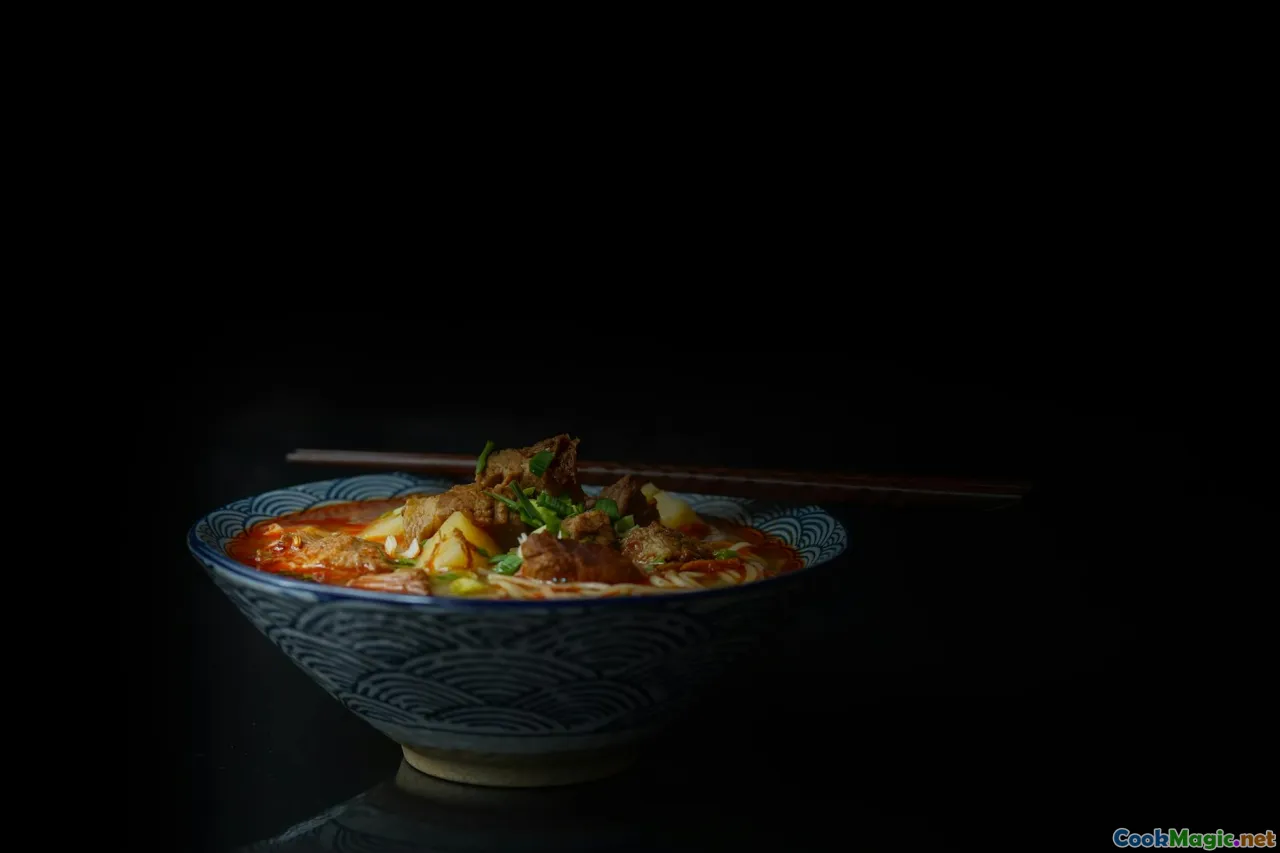
-
Broth: Clear, golden, gently gelatinous. Aromas of leek and peppercorn. If you close your eyes, imagine the smell of wet stone by a hearth mixed with warm ham—this is it.
-
Chickpeas: On the tongue, the skin should yield without flaking, the interior tender and creamy with a faint walnut note. A whisper of olive oil brings them alive.
-
Cabbage: Sweet-bitter, with garlic’s toasted nuts and a pickled lift. It resets your palate between fatty bites—do not skip it.
-
Chorizo: Paprika-forward with a lactic tang from curing; slices should be juicy but hold shape. A blush of orange fat stains the plate like an artist’s signature.
-
Morcilla: Plush, pudding-soft, leaning toward clove and onion. It spreads like butter on bread.
-
Beef shank: Fibrous, tender, tasting of rain-soaked earth wedded to meat. The best bites are those with a jelly edge.
-
Marrow: A spoon of silk. Sprinkle with sea salt and parsley; smear on toast; thank the universe.
Where to Taste: A Short Pilgrimage

Madrid spoils you for cocido. La Bola, with its individual red ollas, performs an old ritual over charcoal for tourists and locals alike. A short walk away, Lhardy has been pouring broth in silver tureens since 1839—air perfumed by brandy, mirror-mottled walls, and a sense that Galdós might still be at the next table. Casa Carola in the Salamanca district serves a generous, homey version where the cabbage is particularly well handled; La Daniela is famous for a soup with a jeweler’s clarity.
Beyond the capital, travel to Castrillo de los Polvazares in León for cocido maragato served under wooden beams, the meats arriving first like a squadron. In Potes, Cantabria, ask after lebaniego chickpeas and a relleno that floats like a cloud but tastes of saffron and Sunday. In Seville, look for puchero broth turned into sopa de picadillo at Christmas, when bowls glint with chopped egg and ham.
Pairings: Wines, Sides, and Conversations

Cocido teaches you to drink wisely. Start with a small glass of vermut de grifo—the bitterness brightens the broth and tickles any lingering smoke from the chorizo. For the meal:
-
White: A textural white from DO Vinos de Madrid (Malvar or Albillo Real) has a waxy mid-palate that flatters the broth. A Godello from Valdeorras lends orchard fruit and a mineral finish.
-
Red: A young Mencía from Bierzo—violets, red berries—threads through the meats without overwhelming. If you crave structure, a Tempranillo from Ribera del Duero with restrained oak is excellent, but keep tannins velvet, not sandpaper.
-
Cider: With cocido montañés or lebaniego, natural sidra Asturiana cuts through fat with apple-fresh acidity.
-
Non-alcoholic: Sparkling water with a lemon twist punctuates the richness; a homemade mosto or a red-grape tinto de verano sin alcohol can be playful.
On the side, offer piparras, a bowl of bright tomato sauce, and good crusty bread—pan candeal in Madrid, or a dense, country loaf with a bitter crust. A dish of olives on the table reminds you that salt can be sung in different keys.
Leftovers Alchemy: Cooking Tomorrow’s Memories

One of cocido’s many mercies is how beautifully it reincarnates.
-
Ropa vieja de cocido: Pull leftover meats into threads; sauté with garlic, onion, and a whisper of pimentón until edges crisp. Fold in a few tablespoons of chickpeas. Serve on toast or spooned into warm tortillas for a Madrid-meets-Havana lunch.
-
Croquetas de cocido: Mince meat finely; stir into a stiff béchamel perfumed with a crack of nutmeg. Chill, crumb, and fry until they sing. The inside should be custard-soft, almost trembling.
-
Ensaladilla de garbanzos: Toss chickpeas with tuna, roasted red pepper, parsley, lemon, and good olive oil. A midnight fridge raid is almost guaranteed.
-
Canelones de Sant Esteve: In Catalonia, leftovers become Boxing Day canelones. Grind meat and a bit of cabbage with béchamel, pipe into pasta, top with more béchamel and grated cheese, and bake until blistered.
-
Caldo redivivo: The broth on day two is silkier and more self-assured. Cook tiny stars or fideos; finish with a drop of good sherry and a ring of green onion.
From Adafina to Olla Podrida: The Cultural Thread
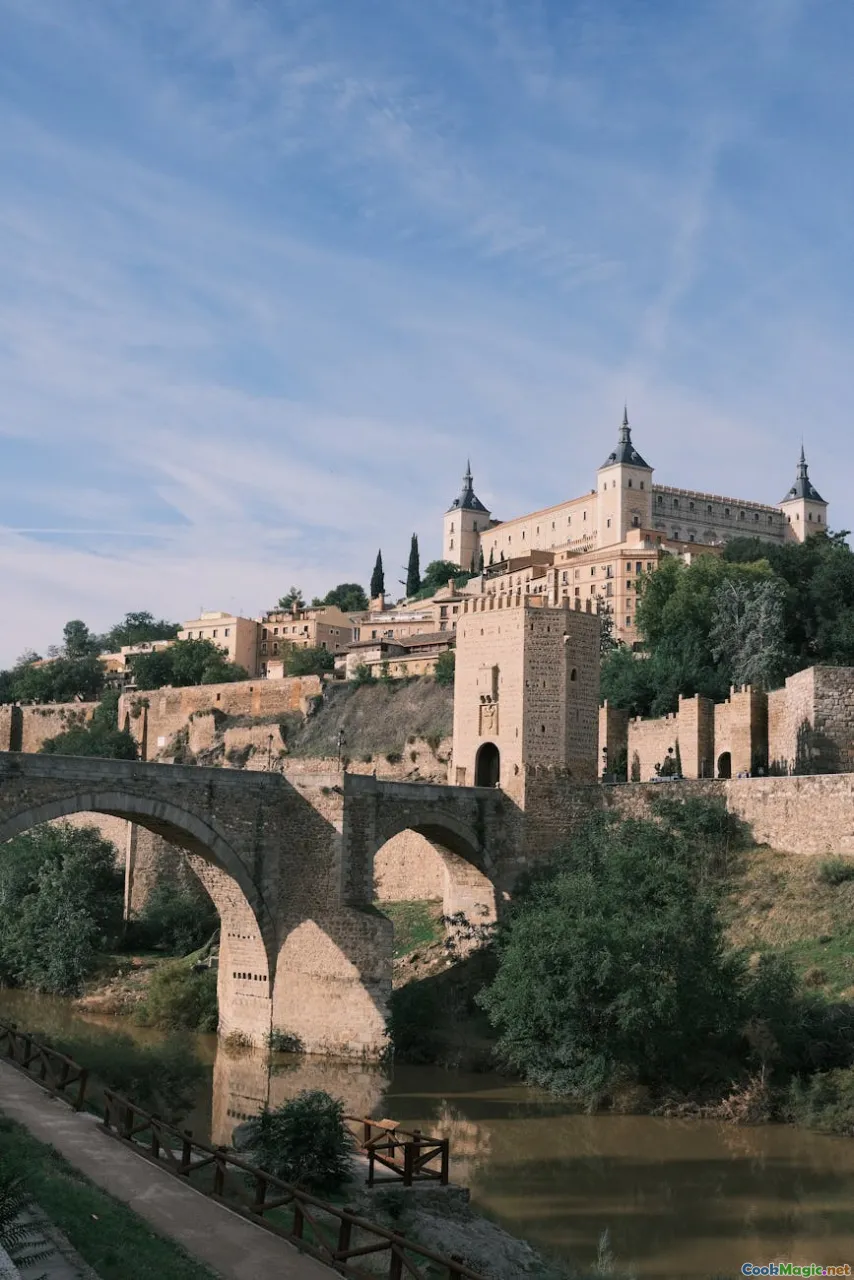
Cocido’s genealogy is a story of resourcefulness and reinvention. In medieval Spain, Sephardic Jews made adafina, a long-cooked Sabbath stew of chickpeas and meat set on embers before sundown. After the expulsion of 1492 and the pressures of the Inquisition, the stew morphed—pork entered the pot as both ingredient and social signal. In the deeply Catholic centuries that followed, olla podrida (possibly from poderida, “powerful”) appeared in literature as a symbol of abundance—and sometimes excess.
By the nineteenth century, Madrid gave cocido a bourgeois stage. Boardinghouses and fondas served it as the democratic centerpiece of midday meals, each cook guarding her blend of bones and ritual. Railroad workers and clerks ate it at the same hour as lawyers and grandmothers; it flattened class differences with a ladle. Lhardy codified the service, La Bola preserved the ember-flicker method. In the twentieth century, cocido became a fixed star of the menú del día—perhaps on Wednesdays or Thursdays, depending on the barrio—anchoring the workweek in something slower than the clock.
Today, Michelin-starred kitchens nod to cocido with clarified broths and molecular noodles; grandmothers still teach it by ear and steam. It is both museum and playground, proof that food survives by accommodating both nostalgia and curiosity.
Cocido vs. Other Iberian Stews: A Cook’s Comparison
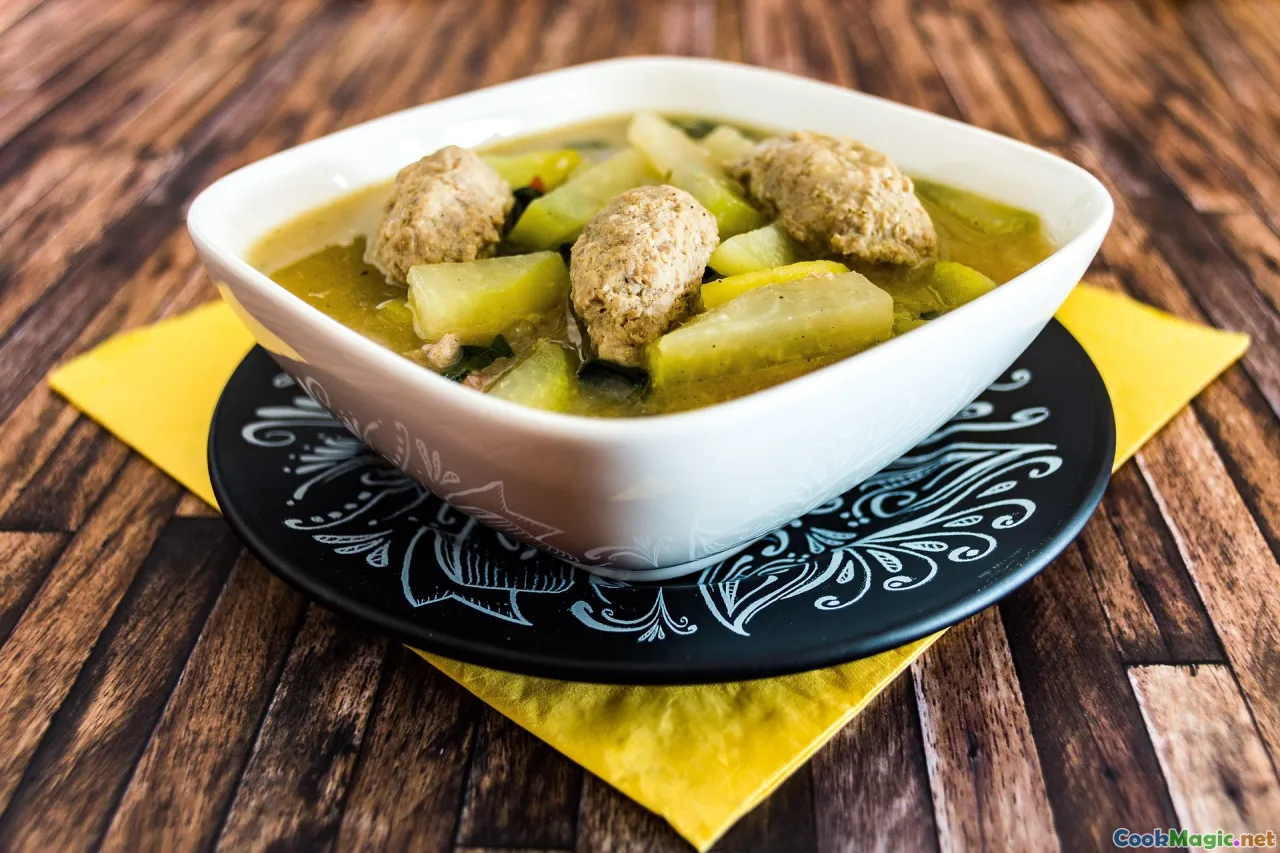
-
Fabada asturiana vs. cocido montañés: Both are bean-and-pork symphonies. Fabada’s faba beans are enormous and creamy, the broth unctuous and brick-red from pimentón. Cocido montañés keeps more green notes—berza lends freshness—and the broth is paler though no less potent.
-
Caldo gallego vs. cocido: Caldo is a soup first, with grelos (turnip greens) and potatoes, occasionally white beans and chorizo. Cocido is a structural epic, with distinct courses and the chickpea as protagonist.
-
Escudella vs. cocido madrileño: Escudella’s pilota and galets bring an Italianate pasta-meatball ceremony; cocido leans on fideos and the triptych service. Both use bones and long simmers to extract grace from thrift.
Modern Kitchens: Slow Cooker, Pressure Cooker, and Induction

-
Slow cooker: An ally, not a cheat. Layer bones and meats beneath, chickpeas above, vegetables on top. Cook on low 8–10 hours. Add chorizo and morcilla in the last hour. You may miss a bit of evaporation flavor, so finish the broth uncovered on the stovetop to concentrate.
-
Pressure cooker/Instant Pot: Excellent for weekday cocido. Cook bones, meats, and chickpeas with aromatics at high pressure for 45–50 minutes with natural release. Add chorizo and morcilla afterward and simmer uncovered 15–20 minutes. Strain for clarity. Expect a slightly cloudier broth; the trade-off is time.
-
Induction and clay: If you love an olla de barro but cook on induction, use a metal heat diffuser or a flame-tamer on a gas ring to keep the clay’s gentle gradient. Clay mellows the simmer, making it easier to avoid the violent boil that clouds broths.
-
Freezer strategy: Freeze the broth in small containers, chickpeas separately, and a mixed packet of meats. On a bleak Tuesday, dinner becomes a ten-minute practice in gratitude.
Common Mistakes and How to Fix Them

-
Boiling the pot: Cloudy, greasy broth. Fix by chilling and de-fatting; reheat gently and serve with extra cabbage and a squeeze of lemon to sharpen.
-
Skipping the soak: Chickpeas cook unevenly and split skins. If you forgot, use the quick soak: boil 5 minutes, rest 1 hour, then proceed. But know: an overnight brine gives best texture.
-
Overseasoning early: Cured meats release salt slowly. Fix with raw potato slices simmered 15 minutes to absorb salt, or blend in unsalted stock to dilute.
-
Morcilla catastrophe: It burst. Wrap in cheesecloth next time and add late. Salvage by straining the broth carefully and presenting it as a 'chef’s choice' treat on toast.
-
Greasy palate fatigue: Sautéed cabbage with vinegar, piparras, and an acidic red like Mencía restore balance.
-
Meats too tight: Overcooked at a boil. Slice thin across the grain and spoon hot broth over before serving; a gloss of olive oil helps.
A Personal Map: Three Bowls That Changed My Cooking
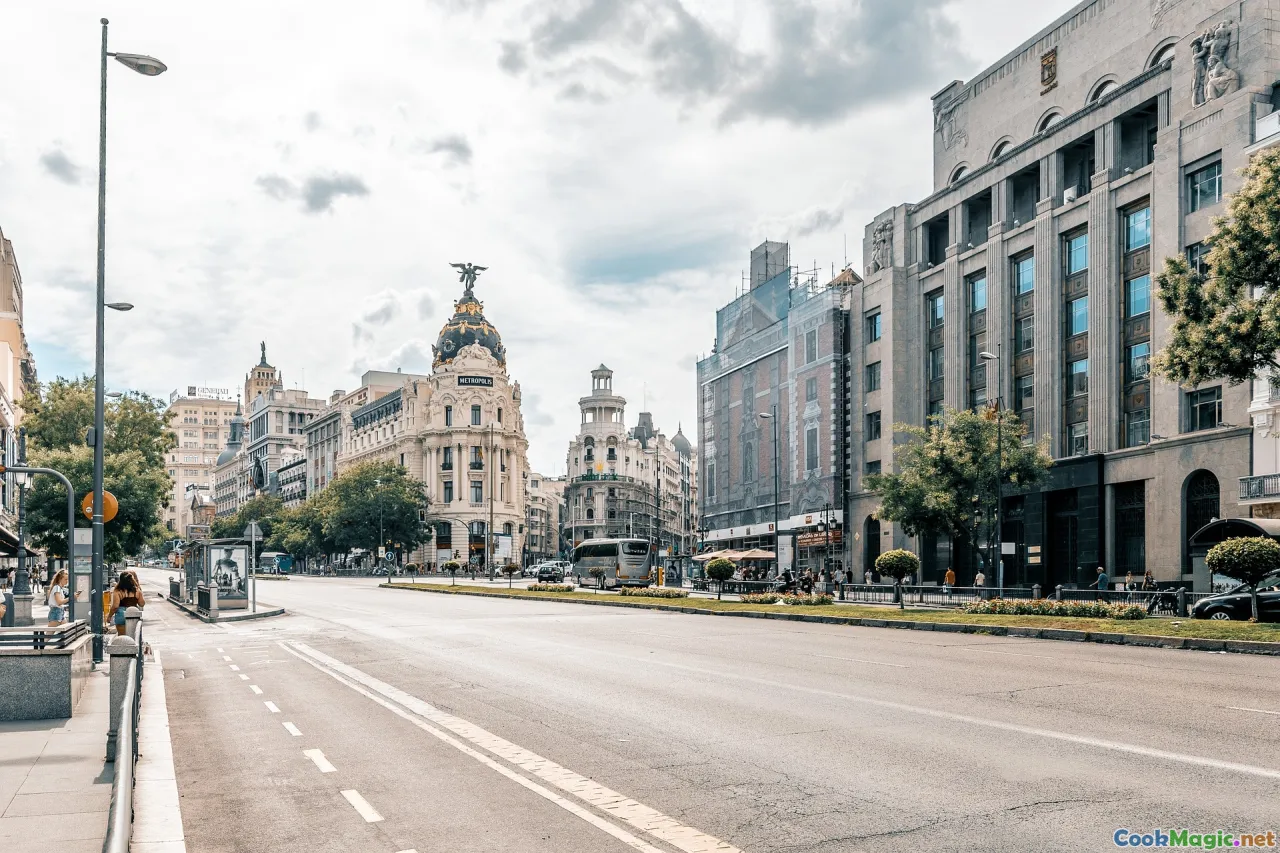
-
Lhardy, late afternoon: A waiter with white gloves poured broth from a silver jug. It smelled of nutmeg and ham corridors. The soup arrived before any talk, and we learned that silence before broth is a form of respect. I walked out into Carrera de San Jerónimo warmed from collarbone to ankle.
-
Castrillo de los Polvazares, after rain: The maragato meats came first—lacón, morcillo, tocino—splayed on a wooden board with the confidence of a painter’s palette. I thought it barbaric until the first bite. The order rewired my appetite; the final course of soup felt like a lullaby.
-
A friend’s kitchen in Lavapiés: The cocido was vegetarian by necessity—chickpeas, turnips, a smoked paprika sofrito, kombu for umami, a Parmesan rind slipping its secret salt into the pot. No sacramentos, but the soul of cocido stood up anyway: patient, generous, communal.
Cooking With Feel: Taste as You Go
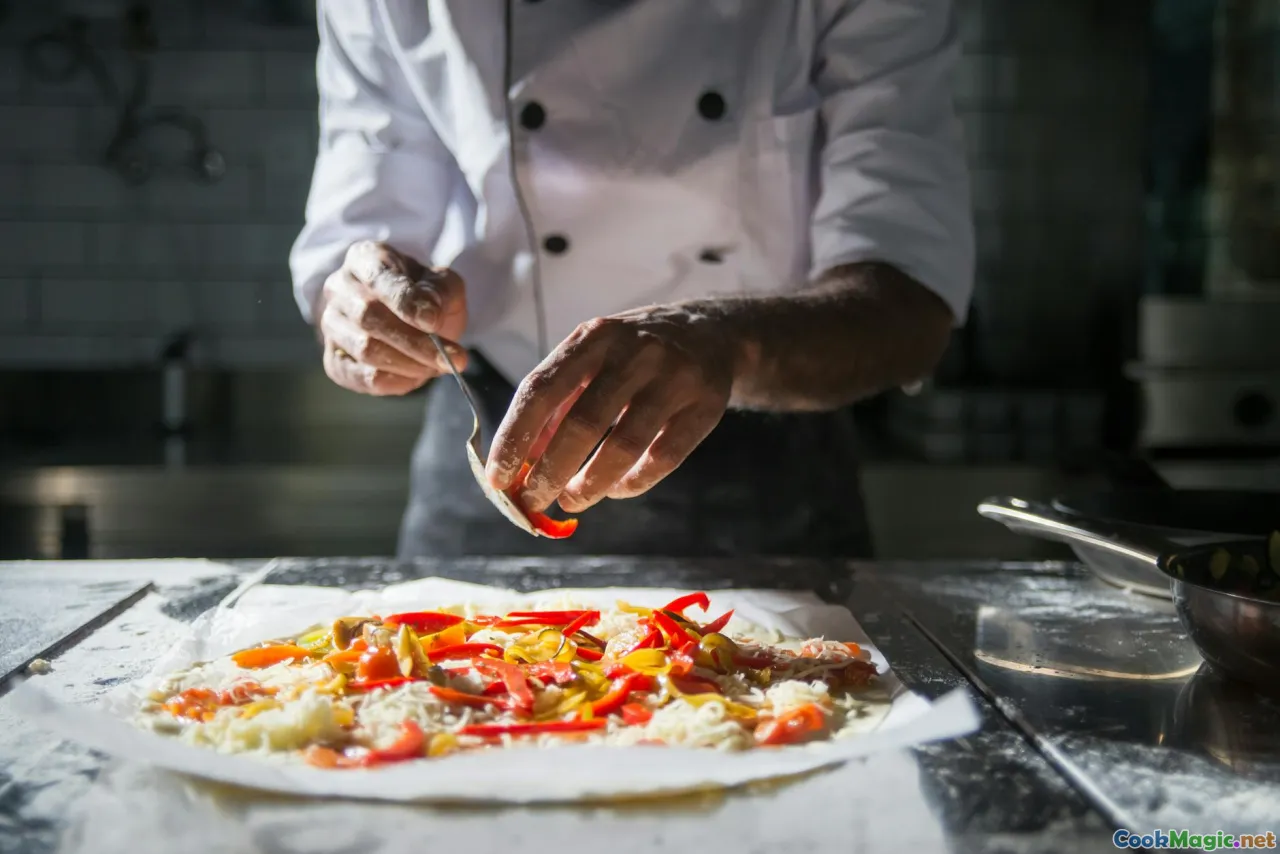
Add bay leaves but hold back on thyme; let turnip speak. Taste the broth in a warm spoon, not a cold one—fat behaves differently. When you think the chickpeas might be done, eat three: the first lies, the second negotiates, the third tells the truth. The best cocido cooks are suspicious of timers and faithful to the whispering pot.
If you dare to riff, keep to the grammar: a clear broth, a legume with integrity, a thoughtful arrangement of meats or their analogs, and a green counterpoint. A few saffron threads can gild the lily; too many and you lose the room.
A Cook’s Shopping List, Annotated
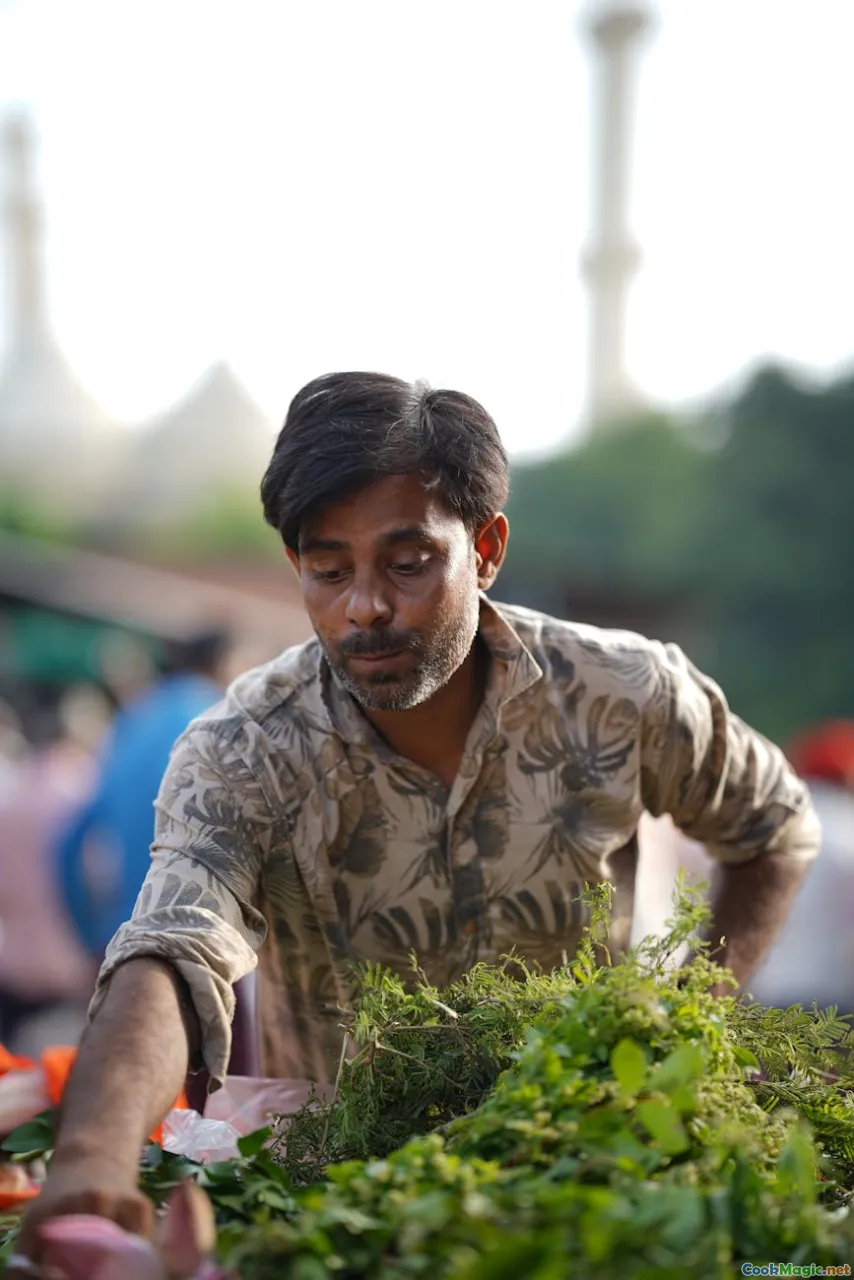
-
Chickpeas: Look for origin labels—Fuentesaúco (Zamora) or Pedrosillano (Salamanca). Avoid anything with too much dust or broken skins.
-
Bones: Ask the butcher to saw marrow bones into manageable lengths; smell the jamón bone—it should be clean, not rancid. If you can, score a piece of knuckle for gelatin.
-
Chorizo: Semi-cured works best; look for pimentón de la Vera on the label for smoky depth. Fresh chorizo bleeds too much fat; fully cured can be leathery.
-
Morcilla: Onion-forward for softness. If your shop carries morcilla de Burgos (with rice), it’s sturdier and less likely to burst.
-
Cabbage: Choose a head that feels heavy for its size. Savoy works but classic white cabbage holds its bite.
-
Vinegar: Sherry vinegar is all generosity—nutty, layered, a dash of Andalucían sun in a dark winter kitchen.
For the Purists, For the Dreamers
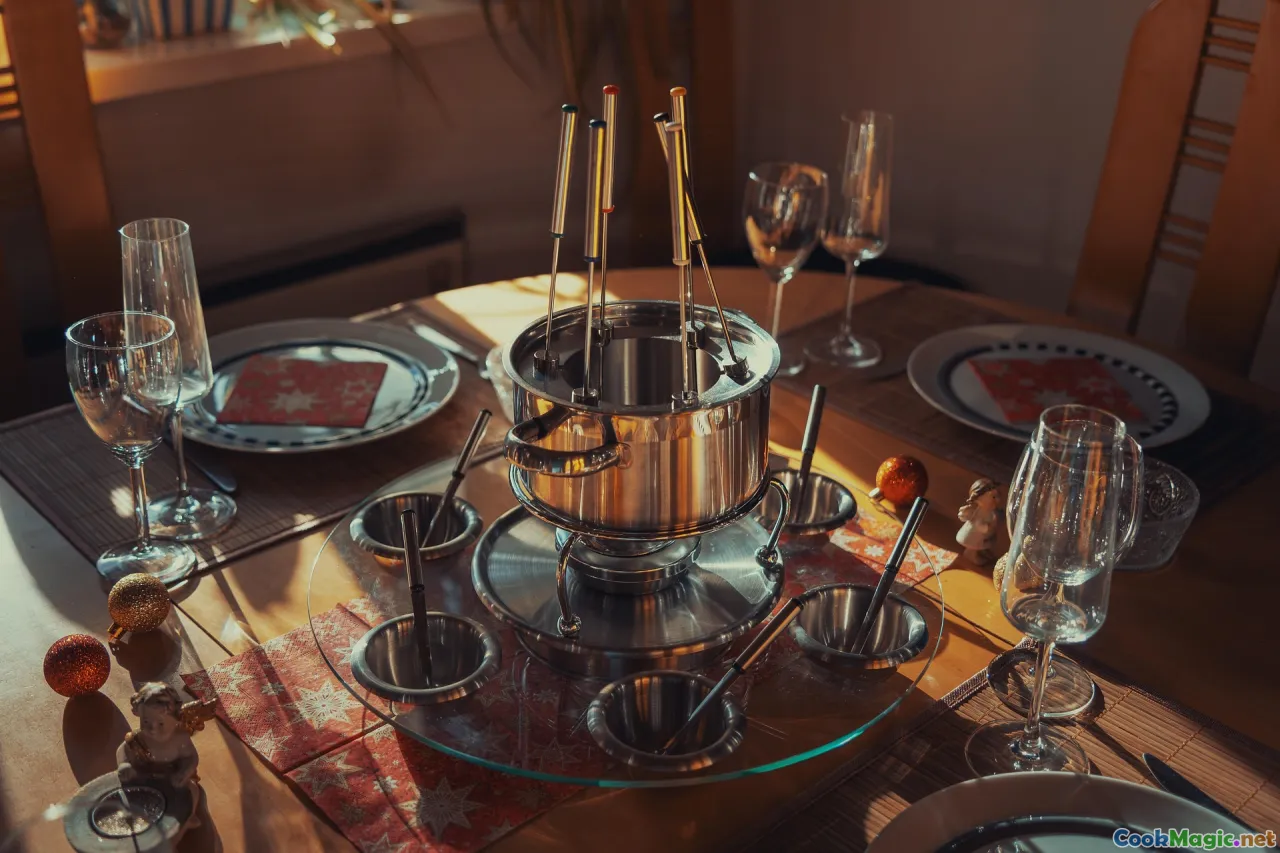
There is a version of cocido that exists only in your house. Maybe you skip the morcilla and add more carrot; maybe your grandmother swore by a clove in the onion, and a bay leaf tucked under the chicken skin. Perhaps you save the marrow bones for a private moment in the kitchen, sprinkled with salt and slivered shallot. I have known cooks who add a single dried chile for a phantom warmth and those who insist that even a chile’s shadow is heresy.
Here is what is not negotiable: cocido refuses haste and rewards attention. It invites people to linger and to argue, to claim a favorite vuelco, to nudge a neighbor’s piece of chorizo, to pour a little more broth when they thought they were finished. Even when eaten alone, it behaves like a community.
On winter evenings, when the light goes ash-grey by five and the apartment smells faintly of laundry and rain, I set a pot to whisper. Somewhere between the first skim and the second splash of cold water over the chickpeas, the kitchen grows larger. The broth takes the shape of its pot, and then, miraculously, the shape of you. That is the magic of slow-cooked cocido: it becomes the pace you need—efficient in its thrift, lavish in its comfort, and always, always better when shared.









